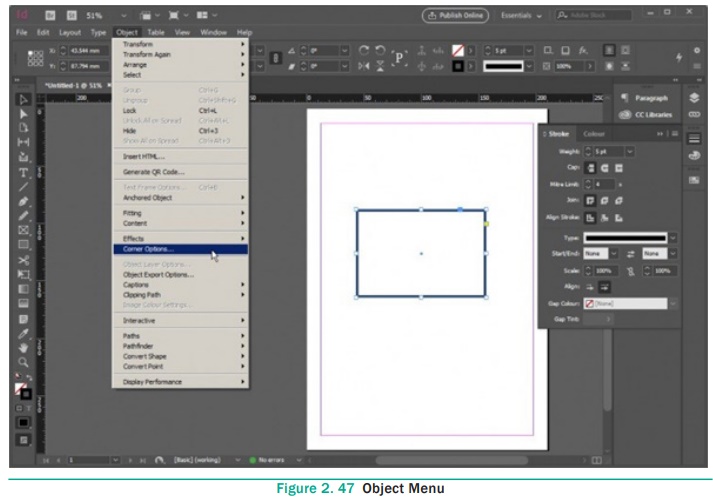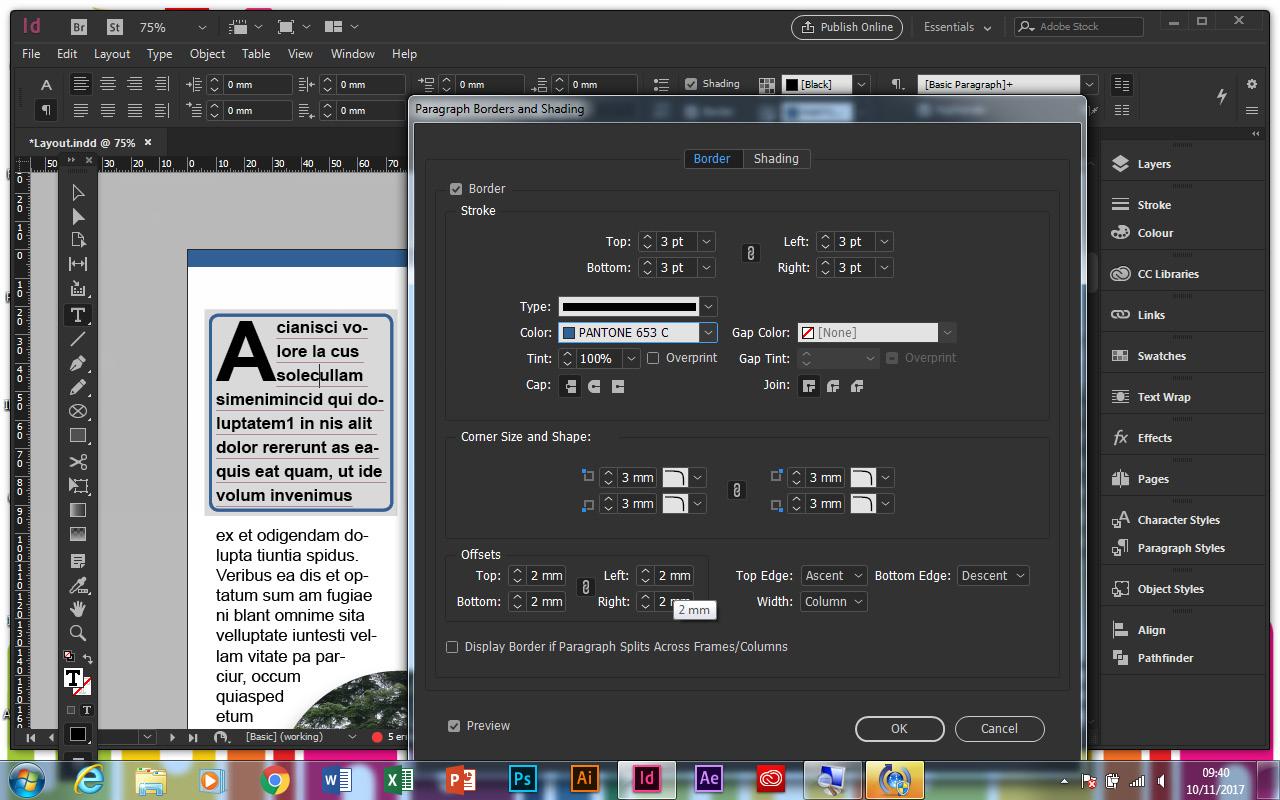

Now you'll sample the text color and apply it to some other objects.

This is a fast way to apply the same formatting from one object to another and it's really helpful for creating consistent colors. If you want to apply the same color to other artwork, one way is to sample the color using the Eyedropper tool. Making a color this way is actually pretty easy, but that color isn't automatically saved. Now if you need to apply a specific color, maybe a color somebody gave you, you can type in those color values if you have them. Then you can drag each of these sliders, cyan, magenta, yellow and black so they approximately wind up with these color values. Click in the color area down here to apply a dark blue color. Now you can create a color by sampling in this color field at the bottom of the panel or adjusting each color independently using these sliders or even by typing in values to create a color from the mix. These are printing inks and are used on most desktop printers to create color when you print, and RGB or red, green and blue which is typically used for creating color content viewed on screen like a presentation. The two most widely used are CMYK which stands for cyan, magenta, yellow and black. In the menu that appears you'll see a list of methods for creating color. To show color in a certain way, click the Panel menu in the upper right corner here. To change to Fill color, click the Fill color in the Properties panel and select the Color option at the top of the panel that appears. So select the Type tool on the Tools panel on the left, move the pointer over this text and when the pointer looks like an eyebeam drag across the text to select it.

You'll do that by changing the color of this text. Having default colors is a great way to jumpstart your design process, but you may want to make your own color. This applies no color to the stroke and removes any previously applied color. You can press Escape to hide these colors then click the Stroke color below the Fill color in the Properties panel and choose the color from the swatches that appear so you can remove the stroke. You might need to scroll in the panel to see it. Make sure you wind up with this orange color in the fill of the frame. Try clicking a few of the colors to see how they look in the selected frame. Don't use it in the place of black and is what we can use for white. is a black that is used for printing marks. You can apply the color called to remove color.
Adobe indesign cc 2018 strokes series#
Make sure that the Swatches option is selected so you can see a series of default colors. Click the Fill color and you'll see a panel at the top are options showing Swatches which are default colors that come with every document, a Color mixer for creating your own color and Gradients. In the Properties panel to the right of the document you'll see a Fill color and a Stroke color for the selected frame. You can apply a color or a gradient which at its simplest is a blend from one color to another to the fill or stroke of selected objects. A stroke acts like a border around the fill. Frames, shapes, texts and more can have a fill which is this white color and a stroke which is the red color. Select the Selection tool in Tools panel on the left and click to select this white frame. To follow along you can use your own document or open this document from the practice files for this tutorial. To start working with color you'll first learn what stroke and fill are, then apply color using existing colors and then make your own color. Creating and applying color is a great way to be creative in InDesign.


 0 kommentar(er)
0 kommentar(er)
